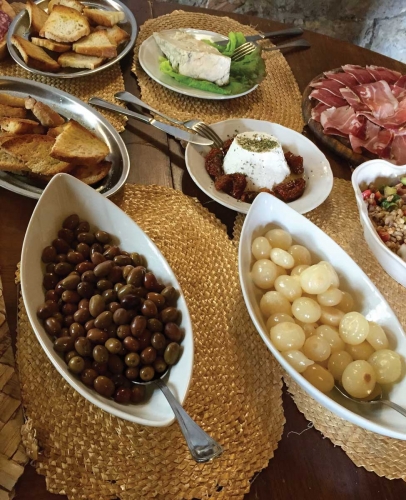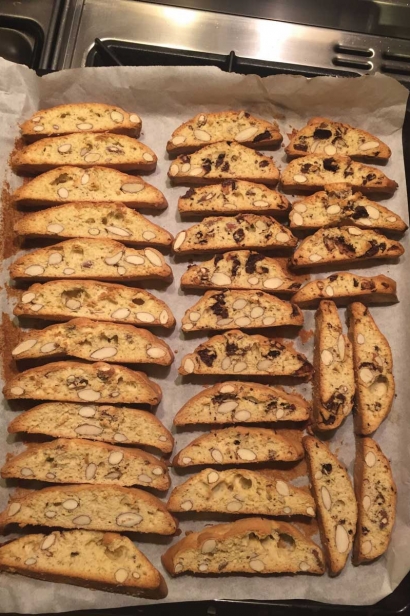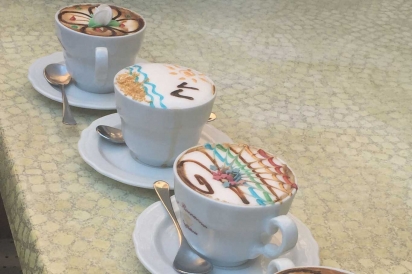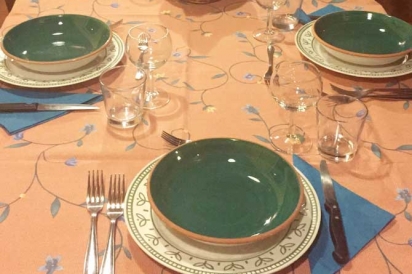Cooking: Destination Satiation
It can be hot, sweet, smoky, spicy and raw. It’s yummy. It’s sensual, and it can bring you to tears. It’s fun too - so fun, that most people do it 3 times a day.
The truth is, it can completely change your destiny, and the fork in the road is what you choose to put in your mouth.
Food is, quite literally, information. The heritage of the food, its ordinance, its’ upbringing are all imprints and all of this passes onto us and affect our DNA. The foods we eat can be vibrant and full of energy, like a rainbow chard that basks in the sun and feeds from rich, nutrient dense soil, and is picked a few miles away. We take that into our bodies and things get serious. All the chlorophyll does some major magic and our cells do a happy dance, oxygenating us into a focused and present state. It is a chain reaction, and there is no choice but to feel vital and strong. We pass this on to our children and they inherit our DNA, built by how we care for and fuel our bodies. When you think about how this information becomes part of our genetic makeup, it makes you think twice about downing the Ding Dongs and diet soda.
Last October, I took a group of 7 people to Tuscany to get a taste of culture and cooking in the hills above Pisa. It’s a magical locale, a brick and terracotta villa nestled in a grove of over 300 silvery leafed olive and stately Cypress trees. Lush and rustic, it’s proprietors are two super cool and well-spoken Italians who make it their living to nurture visitor’s stomachs and intellects. Paolo, aka ‘Wiki Paolo,’ our curator of all things cultural has an answer for you about everything Italian. Manul, the soulful cooking expert leads the culinary aspect.
Manul is deeply insightful and shy in her outward emanation, but firm in her beliefs and is not afraid to share her reverence for the earth and how it is our duty to respect what it produces. A sign hangs in the dining room that says ‘We give thanks to the fruits of the air, of the earth, above and below its surface, to the animals and to the elements, alchemic nourishment for our body and our essence. May our behavior be conscious and dignified.” It showed in everything they taught us to prepare – from the creamy risotto with wild mushrooms to the poached apples with Vin Santo to the balsamic-roasted cipollini onions with amaretti, to the penne with pesto and roasted red peppers and the best cantuccini I’ve ever eaten – and many more delicious bites in between. We gathered around the large butcherblock table donning our aprons, cutting boards and tools in front of us, and discussed the ingredients for each dish. While we prepared everything, we laughed and told stories, nibbled on pieces of Pecorino, fennel Taralli crackers and giant green olives, then sat down to enjoy this experience with every ounce of presence in our bodies. Each dish we tasted fed our souls.
And BOOM. It hit me like a giant pizza.
This is the definition of intention. The act of cooking and eating is by no stretch an accident, a happenstance or an occasion where the intellect takes a holiday while the stomach gets to play with complete abandon.
Unlike any other creature, we are the only ones capable of alchemy in the kitchen. It could be as simple as salad or as intricate as a 4-course meal, but the fact that we can articulate food into art, appreciate it with all 5 senses and participate with other in the act is extraordinary. We can’t stomach certain things because our bodies can’t digest them, so we transform them. We use chemistry to nurture a creation into being by using heat, cold, spice, a blender or a knife. As omnivores with opposable thumbs, we have the conscious ability to select what we will eat, prepare it, consume it and share it. We can pick certain foods that contain superior health and flavor properties and combine them in a way that nourishes our cells. We are able to make decisions about what we like, what spices to add, what heat or technique to use and how we will present it for consumption. No other creature does this. We can choose to partake with others or consume it ourselves, and depending on how much time we have, we can spend a few minutes or a few hours indulging in the meal. We can invite friends and family to the table and fill it with laughter and conviviality. If the mood takes us, we can set some nice dishes and silverware out, furnish the table with a cover, play some background music, light a candle, pour some wine and maybe even an assortment of different drinks to complement different types of food. And so, we’ve created another layer of alchemy to our environment. In Arabic, we call it ‘mezhag’ or zest for life, infusing our creative touch on everyday actions. The point is, we have the choice to do it or not. Humans are alchemists, and alchemy is magic, making us kitchen magicians.
What does the flip side look like?
It can be only about responding to hunger with a quick answer, like fast food. As humans, we feel our stomachs growling and our brain immediately says, feed to survive. Back in the caveman times or the 19th century for that matter, there was a lot more pre-meditation to satisfying that ‘need.’ It would come in the form of expending energy to go hunt down a meaty animal, pick some berries and nuts or cultivate a garden to yield fresh produce. There were no quickie corner stores where you could grab a hot dog and a soda. Kind of obvious, but think about it for a second. What if you lived in a food desert, or hours from the nearest store, how would mealtime look?
As omnivores with opposable thumbs, the choice is really ours. Mealtime can involve relying on processed convenience foods full of empty calories and empty promises with words we can’t pronounce. Or, it can be a beautiful, sumptuous gift from the earth full of real color, real value and real intention. How we source it, prepare it, savor it, share it and make memories with it is also ours for the taking. It can be a chore or a haven, an inconvenience or something we anticipate with great excitement. Now, that’s the real dish.









